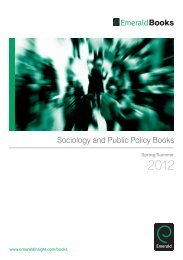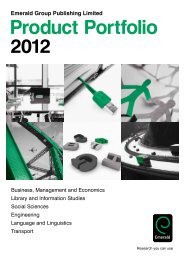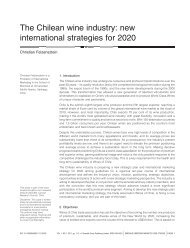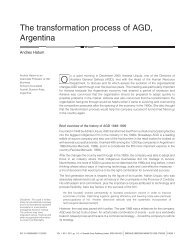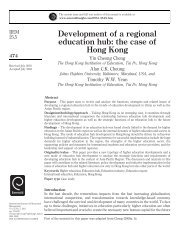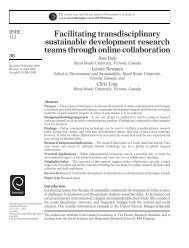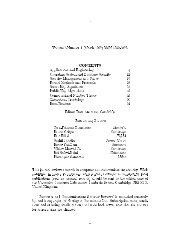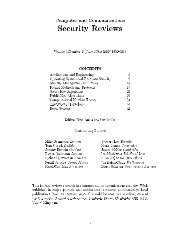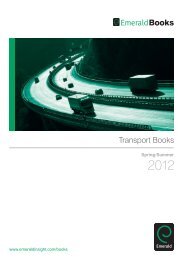CONTENTS - Emerald
CONTENTS - Emerald
CONTENTS - Emerald
You also want an ePaper? Increase the reach of your titles
YUMPU automatically turns print PDFs into web optimized ePapers that Google loves.
1 Applications and Engineering<br />
041101 `Higher Radix Nonrestoring Modular Multiplication Algorithm<br />
and Public-Key LSI Architecture with Limited Hardware Resources'<br />
M Abe, H Morita, Asiacrypt 94 pp 307{317<br />
The authors present a design for a modular exponentiation chip which uses higher<br />
radix arithmetic and a RAM based architecture. With 13,000 gates and six 512 bit<br />
RAMs, a 512 bit exponentiation should take a tenth of a second at 17MHz.<br />
041102 `The Radar Concept using Neural Networks'<br />
T Alexandre, Cardis 94 pp 15{31<br />
The author describes a prototype system for monitoring spending patterns, which<br />
uses neural network techniques and whose runtime code can be elded in a smartcard<br />
and will generate an alarm if the card is used to make anunusual transaction.<br />
041103 `Making Smartcard Systems Robust'<br />
RJ Anderson, Cardis 94 pp 1{14<br />
The author discusses the nature of security robustness, and argues that explicitness<br />
rather than overdesign or redundancy should be the organising principle. Above all,<br />
one must make the system goals and threat model explicit; but the principle is also<br />
useful in enforcing the security properties of the implementation. A distributed TCB,<br />
such as one gets with smartcard based payment systems, can make explicit checking<br />
of security relevant data items both mandatory and pervasive. This was implemented<br />
in a smartcard payment system now elded in a number of countries.<br />
041104 `Whither Cryptography?'<br />
RJ Anderson, Information Management and Computer Security v 2 no 5 (1994) pp<br />
13{20<br />
Three widely held beliefs on cryptography are that it is mostly used to keep communications<br />
secure, that it is the only way to secure electronic evidence, and that most<br />
attacks on cryptosystems involve technical skill. These are shown to be mistaken. A<br />
survey of applications reveals that most applications are concerned with preventing<br />
fraud, in ATMs, telephone cards, pay-per-view TV decoders, burglar alarms and the<br />
like. Furthermore, cryptographic evidence can usually be defeated in court by aggressive<br />
discovery techniques, and most failures result from the opportunistic exploitation<br />
of design or operational blunders rather than from technical attacks.<br />
041105 `Apacs sets standards for cheques'<br />
D Austin, Banking Technology (Mar 95) p 9<br />
Advances in printing technology have enabled a large number of unsupervised commercial<br />
printers to enter the bespoke corporate cheque market, leading to a rise in<br />
cheque fraud. The UK banks are now trying to impose standards and accreditation.<br />
041106 `Smart times ahead'<br />
D Austin, Banking Technology (Feb 95) pp 22{25<br />
The case for smartcards in banking was always hard to make on security alone,<br />
but the growth of card forgery may be changing this. Of equal importance may be<br />
the ability to o er space to retailers for incentive schemes, and to gather information<br />
about customer spending patterns.<br />
041107 `Optical extra for mag-strip cards'<br />
Banking Technology (Mar 95) p 49<br />
This article describes a new security technology, which is based on an optical hologram<br />
containing a unique sequence number and printed on a magnetic card. It is<br />
claimed to be cheaper and harder to forge than a smartcard chip.<br />
3



